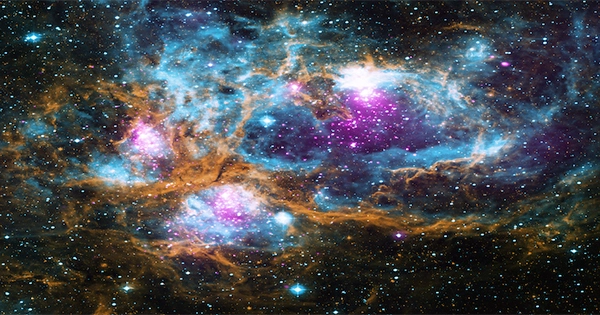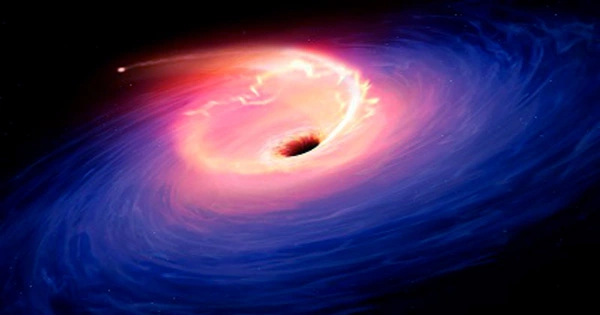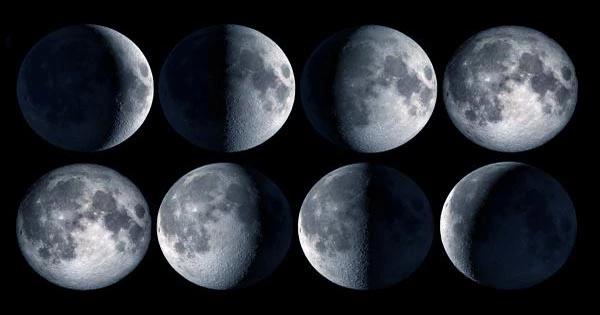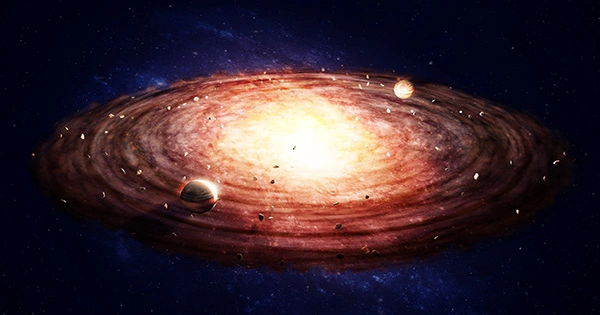Stars are formed from clouds of gas and dust in space, primarily hydrogen and helium, which collapse under the force of gravity. As the gas and dust compress, the temperature at the center of the cloud rises until nuclear fusion begins, and the star ignites, producing light and heat.
The length of a star’s life is determined by its mass. Small stars, less than about 0.5 times the mass of the Sun, burn their fuel slowly and steadily for billions of years, eventually cooling down and becoming dim, inert objects known as “brown dwarfs.”
Larger stars, between 0.5 and 10 times the mass of the Sun, burn their fuel much more quickly, fusing hydrogen into helium at a faster rate. As a result, they are much brighter and hotter than smaller stars, and their lifetimes are correspondingly shorter, on the order of millions to billions of years.
Eventually, these larger stars will exhaust their fuel, and they will undergo a catastrophic collapse. The core of the star will collapse inward, creating enormous pressure and temperature, which can ignite the fusion of heavier elements like carbon and oxygen. The star will then explode in a spectacular event known as a supernova, which can briefly outshine an entire galaxy.
If the core of the star is massive enough, the collapse will continue until it forms a point of infinite density called a singularity, known as a black hole. If the core is not quite massive enough to form a black hole, it will become a neutron star, an incredibly dense object made up of tightly packed neutrons.
In the end, all stars will run out of fuel and die. Some will end their lives in a whimper, as dim, cooling brown dwarfs. Others will go out with a bang, exploding in a supernova and leaving behind a black hole or a neutron star. But regardless of their fate, stars are an essential component of the universe, creating the heavy elements necessary for life and serving as beacons of light in the darkness of space.
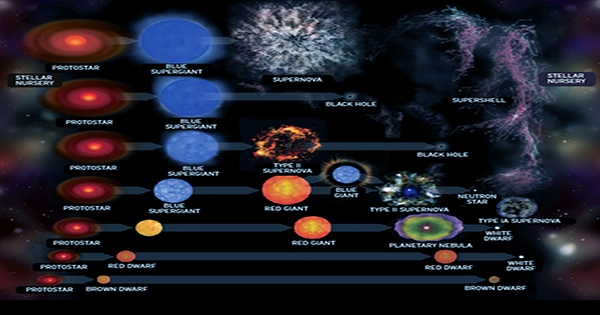
As stars go through their life cycles, they can undergo different phases and transformations, depending on their mass and other factors. Here are some of the key stages that stars can go through:
- Protostar: This is the early stage of a star’s life when it is still forming from a cloud of gas and dust. As the gas and dust come together, the protostar becomes hotter and denser, eventually reaching the point where nuclear fusion can begin.
- Main sequence: This is the stable phase of a star’s life when it is fusing hydrogen into helium in its core. The star will remain in this phase for most of its lifetime until it exhausts its hydrogen fuel.
- Red giant: As a star runs low on hydrogen fuel, its core begins to contract and heat up, causing the outer layers of the star to expand and cool down. This makes the star appear larger and redder, and it becomes known as a red giant.
- Planetary nebula: Eventually, a red giant will shed its outer layers of gas, creating a beautiful cloud-like structure known as a planetary nebula. The core of the star, which is now a white dwarf, will remain behind.
- Supernova: When a massive star runs out of fuel, it can no longer sustain its own weight, and it collapses in on itself. The resulting explosion, known as a supernova, can release more energy in a few seconds than the Sun will produce in its entire lifetime.
- Neutron star or black hole: Depending on the mass of the collapsing star, it may become a neutron star or a black hole. Neutron stars are incredibly dense, with the mass of a star packed into a sphere only a few kilometers across. Black holes are even denser, with gravity so strong that not even light can escape.
Throughout their lives, stars play a critical role in shaping the universe around them. They create heavy elements like iron and gold, which are essential for life as we know it, and they help to distribute those elements throughout space when they explode as supernovae. They also provide light and heat to planets around them, allowing life to flourish.
Is a white dwarf a big star capable of elemental fusion?
A white dwarf is not a large star capable of fusing elements. Rather, it is the remnant core of a low to the medium-mass star that has exhausted its nuclear fuel and undergone gravitational collapse. White dwarfs are incredibly dense, with masses similar to that of the Sun packed into a volume roughly the size of the Earth.
During its life, a star will fuse lighter elements into heavier ones in its core, releasing energy in the process. When a low to medium-mass star exhausts all of its nuclear fuel, it will shed its outer layers and leave behind a hot, dense core. The core will continue to radiate heat and slowly cool over billions of years, eventually becoming a cold, dark object known as a black dwarf.
However, because the universe is not yet old enough for any black dwarfs to exist, all known white dwarfs are still cooling from their former lives as stars. They no longer have the energy to fuse elements and generate heat, but they are still extremely hot and dense, with temperatures ranging from tens of thousands to hundreds of thousands of degrees Celsius.
In summary, a white dwarf is not a large star capable of fusing elements, but rather the remnant core of a low to the medium-mass star that has exhausted its nuclear fuel and undergone gravitational collapse.
